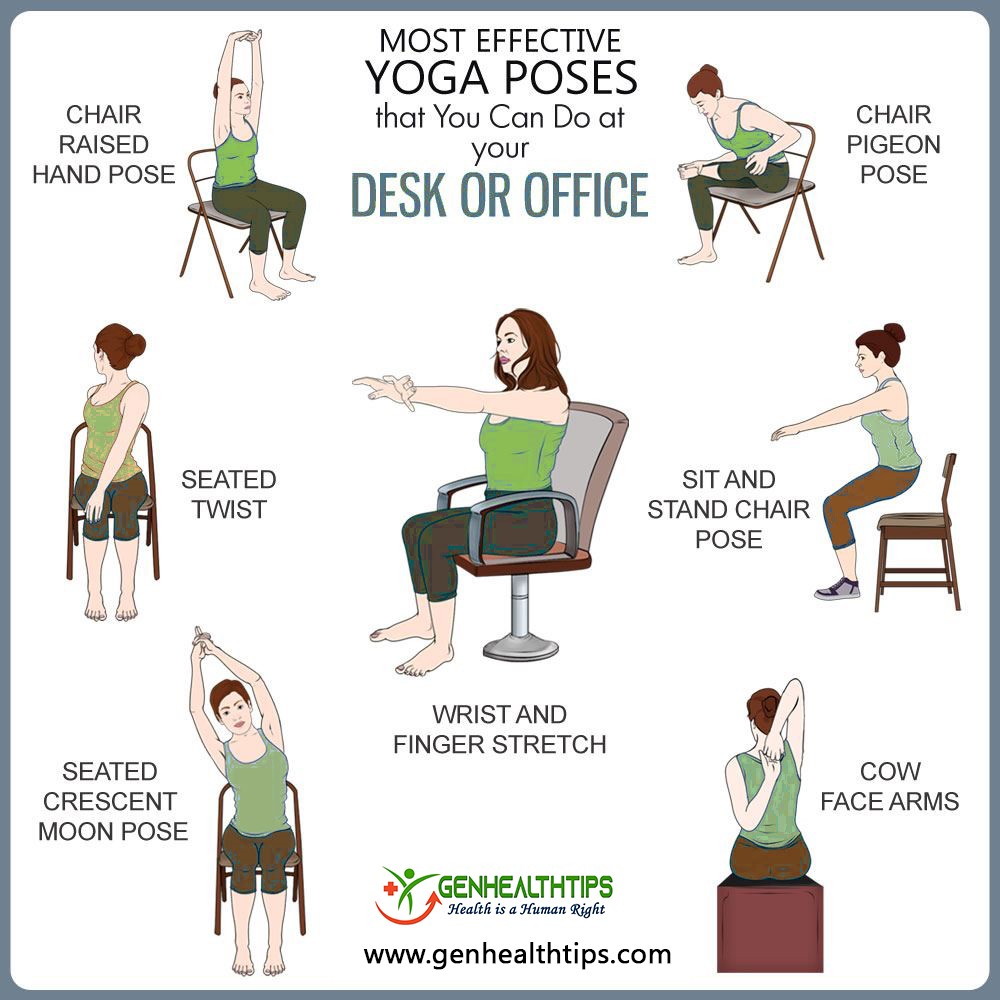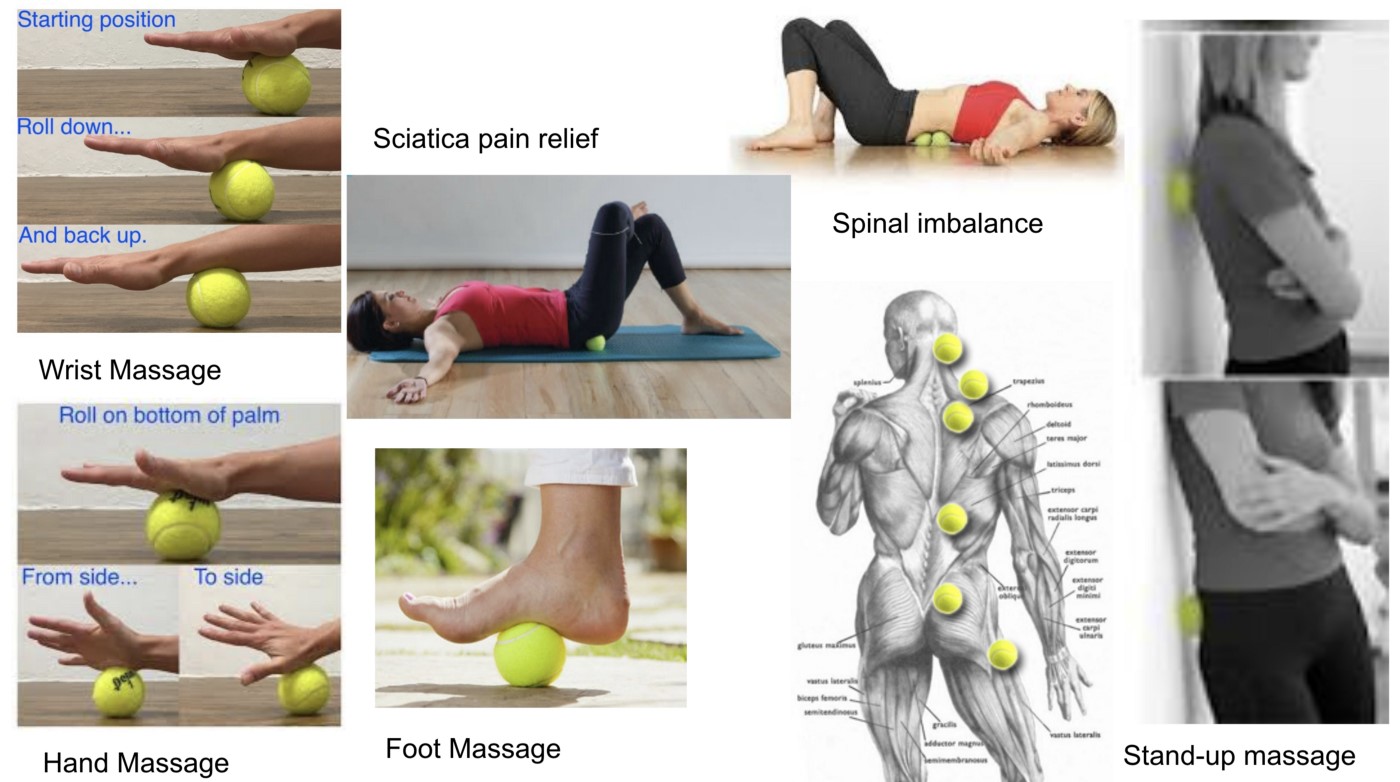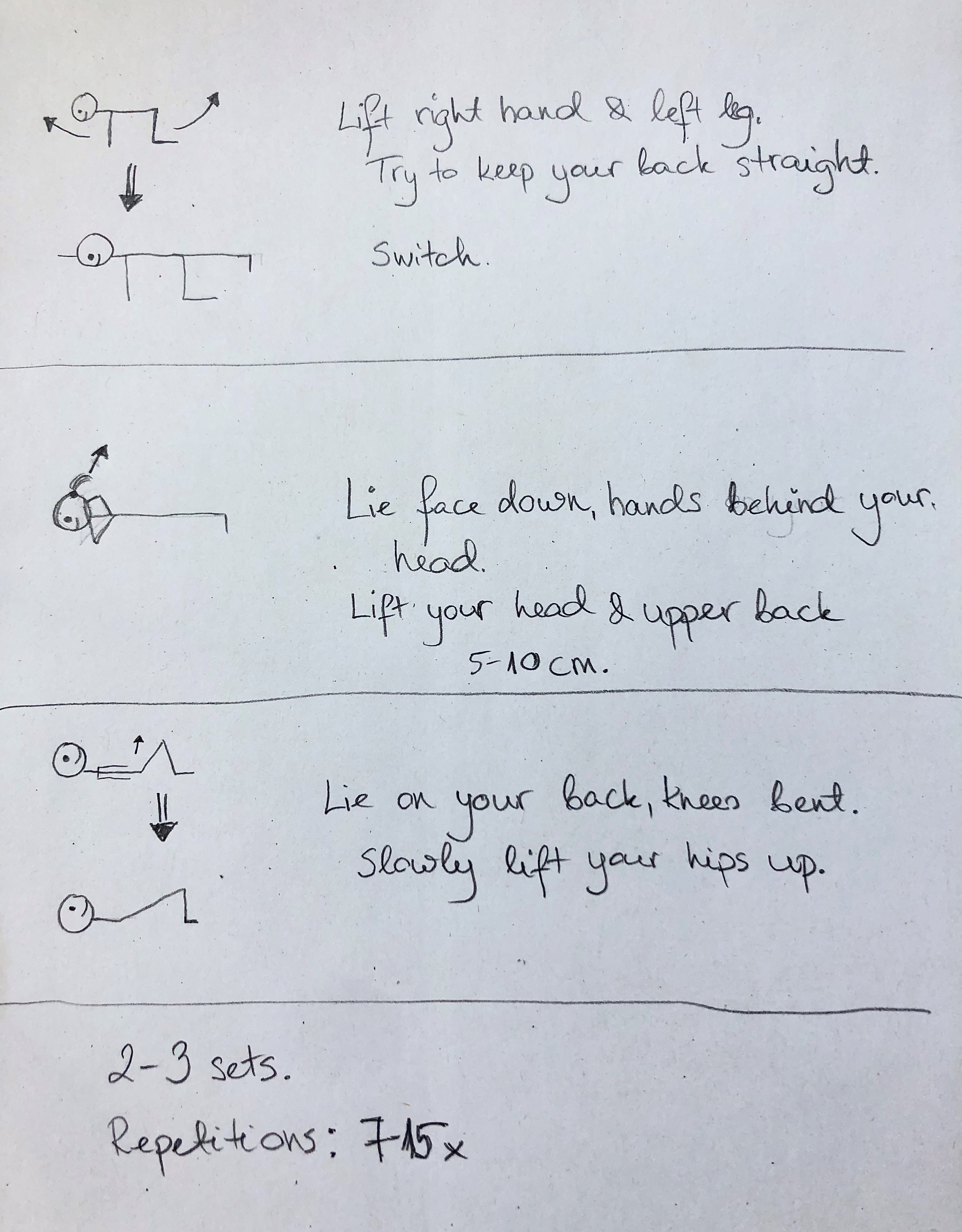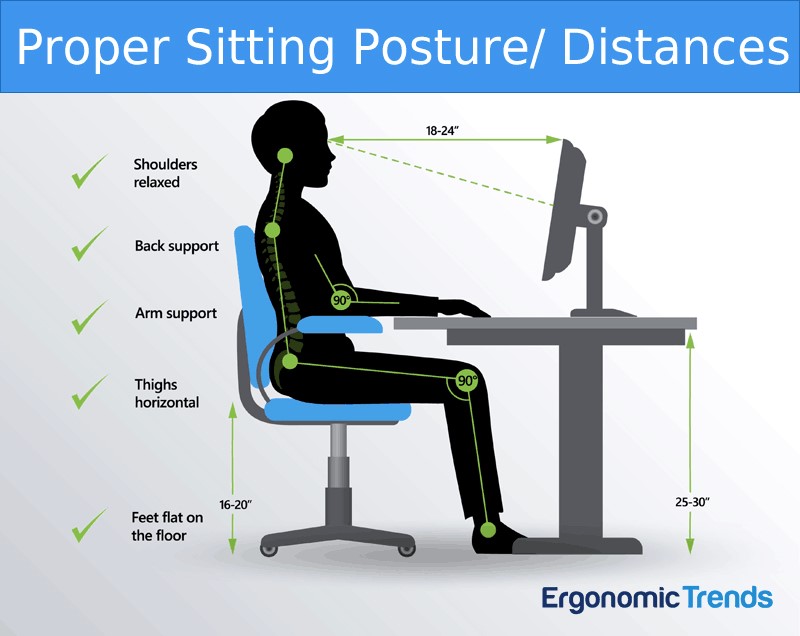By Eva Kram, physiotherapist - As this COVID-19 might force us to work from home for an extended period of time, slouching behind the kitchen table could cause some issues in the long term. Long working hours without enough breaks and in an uncomfortable position might cause lower back issues, tension in the shoulders/neck and headaches. Here are some tips that should help you to reduce the chance of having aches and pains.
Basic guidelines for your home office:
- Try to make your sitting position as ergonomic as possible (see picture). Use cushions, books, boxes etc. to adjust your chair and monitor height if needed.

- Take breaks every 30-45 min (maximum 60 min). Stand up, move, stretch, go grab a glass of water (Tip: leave your jug of water in another room, so that you have to get up to refill your glass).
- Use an alarm or an app to remind yourself to move, if you are afraid that you’ll forget yourself.
- If possible, organise to have a comfortable office chair in your home.
- Don’t worry if you slouch and aren’t sitting properly all the time; you don’t need to. As long as you don’t stay in the same position for hours, you will be fine. Change positions often and move around.
- Favour natural light, if possible. This eases the strain on your eyes.
Ergonomic position:
- Your feet should be flat on the floor. If needed, put something under your feet, so that they are supported (if your feet are up in the air, it can create tension in you lower back).
- Your hips and knees should be at about a 90 degrees angle.
- Keep your lower back supported (use cushions if needed).
- Rest your arms and elbows on an armrest and keep your elbows at around 90 degrees. Your wrists shouldn’t be higher than your elbows.
- Keep your shoulders relaxed.
- The upper edge of the screen should be on the same line as your eyes.
Stretches – what to remember:
- Stretching should never hurt. Pleasant discomfort is enough for it to work.
- Neck and head stretches – no need to pull hard. Just rest your hand on your head during stretching, that weight is enough.
- General rule: 15-30 seconds per stretch is enough.
- Repetition: 1-2 times per day, each movement 1-2 times.

Self-massage at home:
If you have headaches, discomfort and/or tightness somewhere, then the easiest way to help yourself is to massage the area with tennis ball or massage ball. In the picture below you can find some more common areas where you can use the ball. Gently start rolling around that area and if you find a painful spot, stay there until the pain starts to ease (if you feel pain radiating away from the point, it’s ok). Don’t roll on top of the spine! To counter tightness a hot-pack is another good way to relax the muscles. Put it on top of the tight area and keep it there for 15-20 min.

Strengthening exercises – very important as well!
|
 |
Videos:
Easy stretches for the back: https://www.youtube.com/watch?v=5M-b1c2spPE
Easy back-strengthening exercises: https://www.youtube.com/watch?v=20zybMbnVoU
Ergonomics at your desk: https://youtu.be/F8_ME4VwTiw
Sources used:
http://ergonomictrends.com/creating-perfect-ergonomic-workspace-ultimate-guide/
https://www.genhealthtips.com/wp-content/uploads/2019/05/yoga-poses-for-desk-or-offi.jpg
https://blog.usejournal.com/3-benefits-of-tennis-balls-while-traveling-854b36dcc2e5




